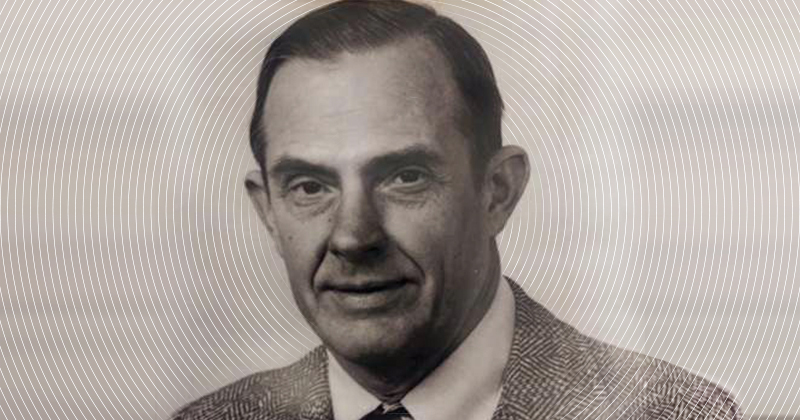Professor emeritus Thomas Brockenbrough has received an Outstanding Achievement Award from the department in recognition of his impact and service.
Thomas Brockenbrough, professor emeritus in the College of Engineering’s Department of Civil & Environmental Engineering, has received the CEE Outstanding Achievement Award in recognition of his impact and service to the department.
After joining UD in 1953 as an associate professor, Brockenbrough’s 35 year career in the department included two terms as department chair (from 1957–1960 and from 1975–1980) and one term as the Assistant Dean of the College of Engineering from 1964–1974.
“We are excited to present Professor Brockenbrough with this award,” said professor and chair Jack Puleo. “Professor Brockenbrough participated in and oversaw the shift to technical advancements in civil engineering, akin to what we are seeing today in terms of digital twins and artificial intelligence. His efforts as department chair and assistant dean were important to the department’s growth at the time. I am impressed by his devotion to student advisement, mentoring, and recruitment at a time when the department was undergoing rapid change.”
Brockenbrough grew up in the Blue Ridge Mountains. He was inspired by his father, Bernard J. Brockenbrough, who was a construction superintendent, as well as G.Y. Carpenter, who was the Resident Engineer on the Blue Ridge Parkway project and a friend of his father, and decided to study civil engineering after finishing high school.
While studying at Virginia Polytechnic Institute (VPI, now known as Virginia Tech), he worked with the Virginia Bridge Company during his summers and spent a year working for the Bureau of Public Roads on Blue Ridge Parkway construction. He graduated in 1942 with a bachelor’s degree in civil engineering. His original plan was to work on the construction of the Pan American Highway (PAH) after graduation, the start of World War II and the halt of the PAH construction forced him to change his course.
Wanting to put his engineering skills to use during World War II but unable to join the Navy due to a childhood injury, Brockenbrough helped design airplanes for the Glenn L. Martin Company in Baltimore as a way of supporting the war effort. During this time, he took night classes towards his master’s degree and, after the war ended in 1945, Brockenbrough enrolled in the Massachusetts Institute of Technology, earning his Master of Science in Civil Engineering in one year. After working for Douglas Aircraft Company in California for three years, he returned to VPI in 1949 because of his interests in teaching, where he worked as an associate professor before coming to UD in 1953.
During the 35 years he spent here at UD, Brockenbrough taught a number of courses, citing design of concrete structures and advanced structural analysis as two of his favorites. He was awarded the College of Engineering’s Excellence in Teaching Award twice. “I’ve always had a certain amount of intellectual curiosity, and teaching courses was a way of also teaching myself and keeping up-to-date,” said Brockenbrough about his passion for teaching.
Brockenbrough oversaw a massive shift in the analytical methods used in the department, as faculty shifted from slide rules to early computers. Recognizing computing as “an important aspect of every field of engineering,” he said, Brockenbrough was instrumental in bringing early computing capabilities to the department. He also taught new courses on computer design of structures and a computational methods of structural design course that he developed shortly before his retirement in 1988.
While here at UD, Brockenbrough also served as the faculty adviser to student chapters of the American Society of Civil Engineers (ASCE; he also served as the ASCE Delaware Chapter President in 1964) as well as the Omicron Delta Kappa, Sigma Xi, Tau Beta Pi, and Chi Epsilon honor societies. He was also a member of the American Concrete Institute and the American Society for Engineering Education (ASEE).
When asked about the achievements he made during his long career in the department, Brockenbrough cited the massive growth of the department’s graduate programs as well as the increase in the number of faculty in the department. “The most important part was the ten years I spent as an assistant dean of college, where I was active in the effort to recruit students and increase enrollment,” he said.
Along with the massive impact he had on shaping the department in the 20th century, he credits his time spent helping students as one of the most rewarding aspects of his work. “To feel like you’ve had an impact on the lives of so many students is a very rewarding experience,” said Brockenbrough.
Article by Erica K. Brockmeier

